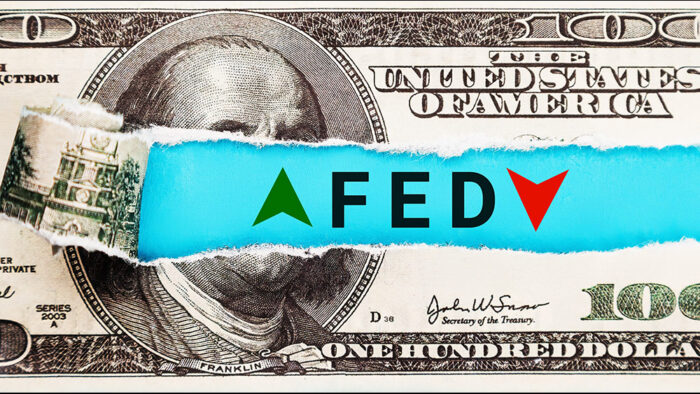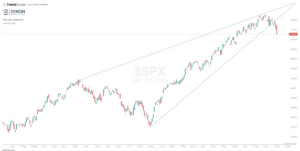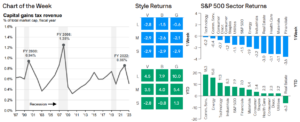When we first explained so-called “zero-dated” or “0DTE” options – options expiring in 1 day or less — we noted that eventually ALL options become 0DTE. Tomorrow is one of those days.
There’s no esoteric reason for tomorrow’s flood of 0DTE options. It’s simply a function of the expiration cycle. All listed options have a fixed expiration date. Since the early days of options trading, expirations were typically the third Friday of the month. Every month brought about a wave of expiring options, all eventually with zero days to expiration. Quarterly expirations, which include key index futures, settled on a March/June/September/December cycle. Guess what: tomorrow is the third Friday in March.
To be sure, expiration days typically brought the potential for extra volatility. They didn’t get the nickname “triple-witching” for nothing. It wasn’t easy to manage the gamma and pin risks in hundreds of listed options, so it was not unusual to see big swings around the open and close on triple-witching days. As the industry got more experienced at handling expiration risks and as the expansion of automated trading made it easier to hedge them. But although the risks are better managed, it doesn’t mean they have vanished completely.
Let me explain the risks noted above. Remember that delta is the sensitivity of an option’s price to a change in it’s underlying asset. Delta is not fixed; an option’s delta changes as it approaches or moves away from its strike price. Gamma represents that change. Neither delta nor gamma is a linear function. For an option that is approaching both expiration and its strike, gamma increases dramatically, meaning that an option’s delta can also vary wildly – especially an underlying stock crosses above and below the option’s strike. If someone holds a $50 call to expiration, the holder may watch the delta of that option jump from nearly zero if the stock is at $49.90 and then flip to 100 if the stock jumps to $50.05 on the close. Vice versa for puts. It can be difficult to manage those delta changes, particularly if you’re short. A long option holder can simply buy low and sell high as the stock crosses the strike, but a short holder needs to decide when and whether to hedge.
Pin risk occurs when someone has an option position in a stock that expires on its strike or very near it. Options are automatically exercised when they are in the money and lapsed when they are out of the money. But the holder always retains the right and not the obligation to exercise their contracts. If a stock has a mysterious late jump over a strike, the call owner may opt not to exercise their calls. But they have to give specific instructions to their broker to lapse them. That means that someone who is short those options may be surprised to find that their stock is not called away after expiration. That provides another set of challenges and risks.
As the industry added weekly and now daily expirations, those risks haven’t vanished. They’ve simply become more customary. And they only apply to a finite list of options.
There are far more options that expire on monthly and quarterly cycles than daily and weekly. There is only a handful of options that expire daily, and all those have either major indices underlying them or ETFs that are based upon those indices. Over 600 of the most active options classes have weekly expirations. The rest of the roughly 6,000 options classes have monthly or quarterly expiration cycles.
Even before the popularity of 0DTE options took root, we asserted that monthly and quarterly expirations still held greater importance. The concentration of more expiring options does appear to have a meaningful role on market volatility. Over the last five years, we calculate the average weekly move for the S&P 500 Index (SPX) to be 2.01%, and the average high-low weekly move to be 3.49%. During quarterly expiration weeks, we calculate that to grow to 3.02% and 4.21% respectively. To be fair, five years of quarterly data is only 20 observations, so we will need to expand our research for a more robust sample size. But it is understandable why the data would show bigger moves in a “triple-witch” week.
Yet, before you run for the hills or start squirreling cash away in the dark corner of a mattress on the prospect of a flood of 0DTE options tomorrow, stop and think. For better or worse, there is no dearth of concerning financial news lately, but another quarterly expiration is not one of them.
Disclosure: Interactive Brokers
The analysis in this material is provided for information only and is not and should not be construed as an offer to sell or the solicitation of an offer to buy any security. To the extent that this material discusses general market activity, industry or sector trends or other broad-based economic or political conditions, it should not be construed as research or investment advice. To the extent that it includes references to specific securities, commodities, currencies, or other instruments, those references do not constitute a recommendation by IBKR to buy, sell or hold such investments. This material does not and is not intended to take into account the particular financial conditions, investment objectives or requirements of individual customers. Before acting on this material, you should consider whether it is suitable for your particular circumstances and, as necessary, seek professional advice.
The views and opinions expressed herein are those of the author and do not necessarily reflect the views of Interactive Brokers, its affiliates, or its employees.


























